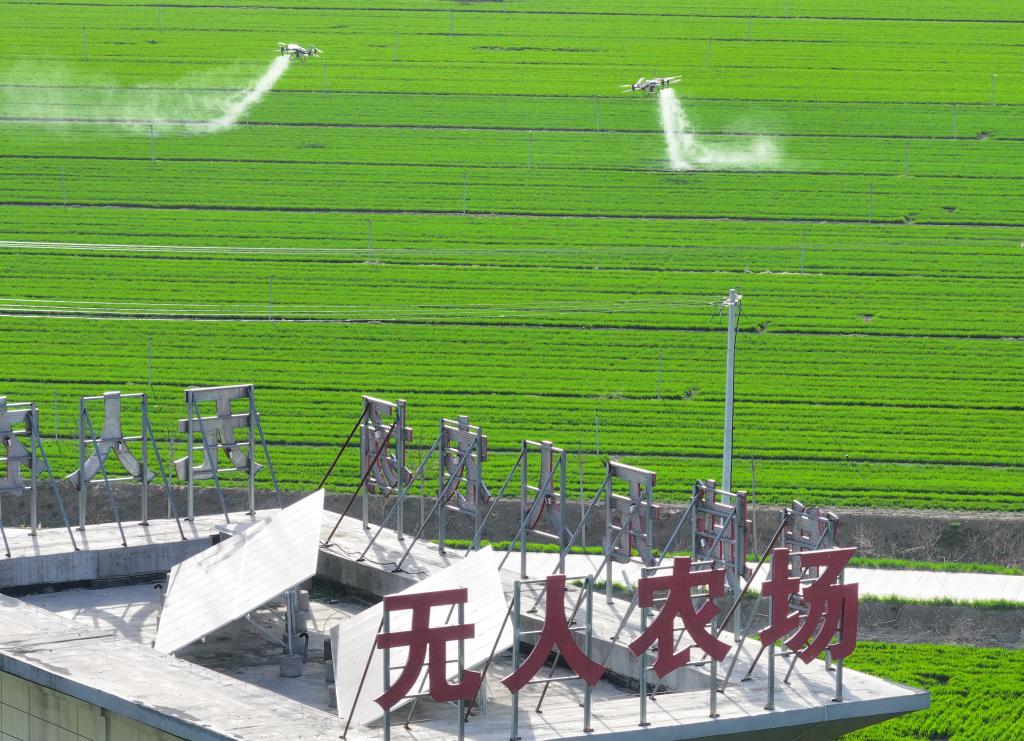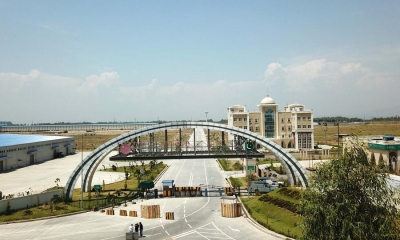China’s AI Leap 2025: Win for Both Global North and Global South

China’s AI revolution, spearheaded by innovations like DeepSeek, is reshaping the global technological landscape.
In the ever-evolving domain of artificial intelligence (AI), China has emerged as a formidable player, offering profuse fortunes for developed countries as well as developing nations to help them keep pace with global technological tapestry.
With the advent of DeepSeek, China’s pioneering AI innovation, the country is rapidly outpacing the West, establishing itself as a global AI powerhouse in connection with Chinese President Xi Jinping’s vision to stay ahead in new quality productive forces especially AI plus initiative. China’s “artificial intelligence (AI) plus” initiative became a reality at the annual sessions of China’s top legislature and top political advisory body, or the “two sessions,” in March last year.
This paradigm shift not only redefines technological leadership but also offers unprecedented opportunities for developing economies worldwide.
In 2023, the scale of China’s core AI industry reached 500 billion yuan. The market scale for AI large models was $2.1 billion, up 110 percent year on year. In 2035, the scale of AI industry is expected to exceed 1.7 trillion yuan by 2035, according to data from the China Center for Information Industry Development.
The global AI market, valued at $196.63 billion in 2023, is projected to grow at a 36.6 percent annual rate from 2024 to 2030, driven by tech innovations in sectors like healthcare, vehicles, and manufacturing. Many developing nations are leveraging AI to boost economic growth, reduce poverty, and improve living standards.
The advancement of AI necessitates global collaboration. Given the multidisciplinary nature of AI research, no single nation can achieve all breakthroughs alone. Cross-border data sharing, enriches training datasets, enhancing model performance. Similarly, international cooperation enables researchers to leverage diverse strengths in algorithms, computing power and applications, accelerating innovation. Moreover, addressing privacy, security and ethical concerns requires a unified effort. By fostering open dialogue and cooperation, the global community can harness AI’s full potential for collective benefit.
By making AI technology more affordable and accessible, China is enabling nations like Pakistan, Bangladesh, and others to integrate AI-driven solutions into key sectors such as agriculture, healthcare, and education. Through strategic initiatives, including the Belt and Road Initiative (BRI), China is fostering global collaborations that equip the local workforce with essential AI skills, creating sustainable technological ecosystems in regions that have traditionally lagged behind in digital innovation.
One of the most significant advantages China offers to developing nations is the reduction in AI development costs. Unlike Western AI models that require extensive computational resources and proprietary datasets, China’s AI firms emphasize cost-effective solutions that maximize efficiency. This affordability allows lower-income countries to adopt AI-driven applications without straining their financial resources. In agriculture, for example, Chinese AI models are being used to optimize irrigation techniques, forecast weather patterns, and improve crop yields, directly addressing food security challenges in water-scarce regions.

While the benefits of AI have largely been concentrated in developed economies, China’s strategic approach to AI development and governance is proving to be a game-changer for developing nations. With its latest AI Capacity-Building Action Plan and commitment to South-South cooperation, China is positioning itself as a leader in helping the Global South harness AI’s potential for economic growth, industrial modernization, and sustainable development.
A core pillar of China’s AI strategy is its emphasis on digital infrastructure development. Developing nations have long struggled with inadequate technological infrastructure, making it difficult for them to participate in the AI revolution. China’s push for AI and digital infrastructure connectivity aims to bridge this gap by providing support for AI technologies, data centers, cloud computing facilities, and high-speed internet networks. By improving AI interoperability and accessibility, China is ensuring that emerging economies are not left behind in the rapidly evolving digital landscape.
Beyond infrastructure, China’s AI initiatives focus on empowering key industries such as agriculture, manufacturing, healthcare, and education. For instance, AI-powered solutions in precision agriculture can help farmers in developing countries optimize yields, manage resources efficiently, and mitigate the effects of climate change. In healthcare, AI applications can enhance diagnostics, telemedicine, and personalized treatments, significantly improving medical services in regions with limited healthcare infrastructure. Through targeted investments and technology-sharing, China is enabling developing nations to leapfrog traditional industrial barriers and accelerate their economic growth.
Another crucial aspect of China’s AI strategy is talent development. Recognizing the importance of AI literacy, China has committed to training professionals and expanding AI education in developing countries. Initiatives such as AI workshops, joint research labs, and knowledge-sharing programs are being implemented to cultivate local AI expertise. This not only builds a skilled workforce but also ensures that AI development in these nations is locally driven and tailored to their unique socio-economic needs. By strengthening AI capacity-building efforts, China is fostering a new generation of AI professionals who can drive innovation and digital transformation in their home countries.

AI governance is another area where China’s approach is proving beneficial for the developing world. Through international cooperation mechanisms, such as the United Nations and the Digital Silk Road Initiative, China is advocating for AI policies that reflect the interests of developing nations. The emphasis on national sovereignty in AI governance ensures that emerging economies maintain control over their data and technological resources. Furthermore, China’s call for ethical AI development, addressing algorithmic bias, data privacy, and security risks aligns with the need for inclusive and fair AI implementation in diverse cultural and economic contexts.
China’s AI surge is also facilitating sustainable development goals (SDGs) in the Global South. AI-driven solutions are being leveraged to tackle pressing global challenges such as climate change, biodiversity conservation, and resource management. For example, AI-powered monitoring systems can help track deforestation, optimize water usage, and reduce carbon footprints. By integrating AI into green development strategies, China is ensuring that developing countries can pursue economic growth without compromising environmental sustainability.
The tangible benefits for developing nations are undeniable. Unlike Western-led AI initiatives that often come with stringent regulatory frameworks or high-cost barriers, China’s AI engagement is built on inclusiveness and mutual growth. The emphasis on South-South cooperation creates a more balanced global AI landscape, where developing nations are not mere consumers of AI technologies but active participants in AI innovation.
China’s AI surge represents a significant opportunity for developing nations to harness the power of artificial intelligence for economic prosperity, technological advancement, and sustainable development. By prioritizing digital infrastructure, industry empowerment, talent development, ethical governance, and environmental sustainability, China is helping to close the AI divide and create a more equitable future for all. As AI continues to shape the 21st century, China’s proactive role in AI development and capacity-building ensures that developing countries can fully participate in and benefit from the ongoing technological revolution.
China’s AI revolution, spearheaded by innovations like DeepSeek, is reshaping the global technological landscape. Aligned with the broader “Made in China 2025” vision, this transformation highlights China’s commitment to leading in AI, intelligent manufacturing, and high-tech industries. For developing economies, China’s advancements are a beacon of hope, offering tools to address long-standing challenges and unlock their potential. As the world watches China’s AI ascent, one thing is clear: the future of technology is being written in Beijing, and its impact will be felt far beyond its borders.
The article reflects the author’s opinions, and not necessarily the views of China Focus.
 Facebook
Facebook
 Twitter
Twitter
 Linkedin
Linkedin
 Google +
Google +






